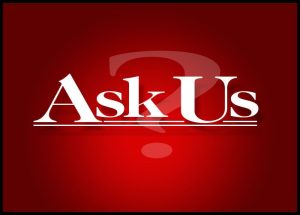Ask Us: Readers ask about false positives for COVID-19, school speed zones
Published 12:00 am Monday, August 31, 2020

- Ask Us
Editor’s note: Ask Us is a weekly feature published online Mondays and in print on Tuesdays. We’ll seek to answer your questions about items or trends in Rowan County. Have a question? Email it to askus@salisburypost.com.
SALISBURY — It is highly unlikely for a person to leave a COVID-19 testing site before getting tested and receive positive results later, according to county health officials.
A reader wanted to verify a rumor circulating on social media that some people in Rowan County who went to get tested, filled out the forms, waited in line, left because the line was long and were told later they were positive.
“It shouldn’t happen,” said county spokesman T.J. Brown. “I can offer that each positive case that is received is contacted and an interview is conducted with the individual. I believe, if we contacted someone and told them they had a positive test result, they would have shared that they never got tested. If that were reported with us, we would have investigated it.”
The Post attempted to speak with the people who claimed to have received positive results after some social media accounts were widely shared. Multiple attempts to do so were unsuccessful.
In a related matter, one reader asked how a test could produce a false positive.
While it’s possible, Brown said there’s a small chance and measures in place are designed to minimize the likelihood of false positive test results. False positive results, Brown said, can occur at various stages of laboratory testing, which can be grouped into the following categories:
• Pre-analytical errors. These are errors that occur prior to the actual testing being done. These could include the mislabelling of samples that result in incorrect results being reported. They may also result from specimen contamination in transport or during aliquoting in the laboratory.
• Analytical errors. These occur during the actual laboratory testing and could occur for reasons that include contamination of a reagent, a substance used in COVID-19 testing. Reagents can arrive contaminated from the supplier.
“To mitigate this, each new batch undergoes a quality assurance check before being put into use,” Brown said.
False-positive results can also arise from contamination due to pipetting errors, which can be due to human error or defects in automated equipment.
• Post-analytical errors. This involves result interpretation by a person and reporting of results. The incorrect interpretation could lead to a false-positive result, Brown said.
Transcription errors could also result in false positive results being generated. Such errors are controlled by having a second technologist review results prior to them being reported.
Do school zone speed limits apply on virtual days, too?
A reader also asked if school zone speed limits apply on Wednesday since classes are only virtual on that day.
In short, motorists can drive the regular speed limit if it’s not a school day, said N.C. State Highway Patrol Sgt. David Morgan. He added that motorists should treat the speed limit in the designated school zone just as if it were a weekend — when restrictions don’t apply.
“Technically, there’s no school. But Monday through Friday, except Wednesday, absolutely use caution,” Morgan said.
If a caution light is blinking on a school zone speed limit sign, motorists should adhere to the posted speed limit.
Rowan-Salisbury Schools spokeswoman Rita Foil added that no students or staff are in the building on Wednesday, except essential workers who are there to deep clean the buildings.
Foil said the school system controls flashing caution lights, which do not operate on non-school days.
In response to the speed limit question, the Highway Patrol also provided a reminder about the state’s school bus stop law. Morgan said it can get confusing sometimes for motorists who may not be aware of when they need to stop.
Situations are as follows:
• Two-lane roadway: All traffic from both directions must stop for a stopped school bus.
• Two-lane with a center turning lane: All traffic from both directions must stop.
• Four-lane roadway: All traffic from both directions must stop.
• Four-lane roadway with a median: Only traffic traveling in the same direction as the bus must stop.
• Four or more lanes with a center turning lane: Only traffic traveling in the same direction as the bus must stop.

